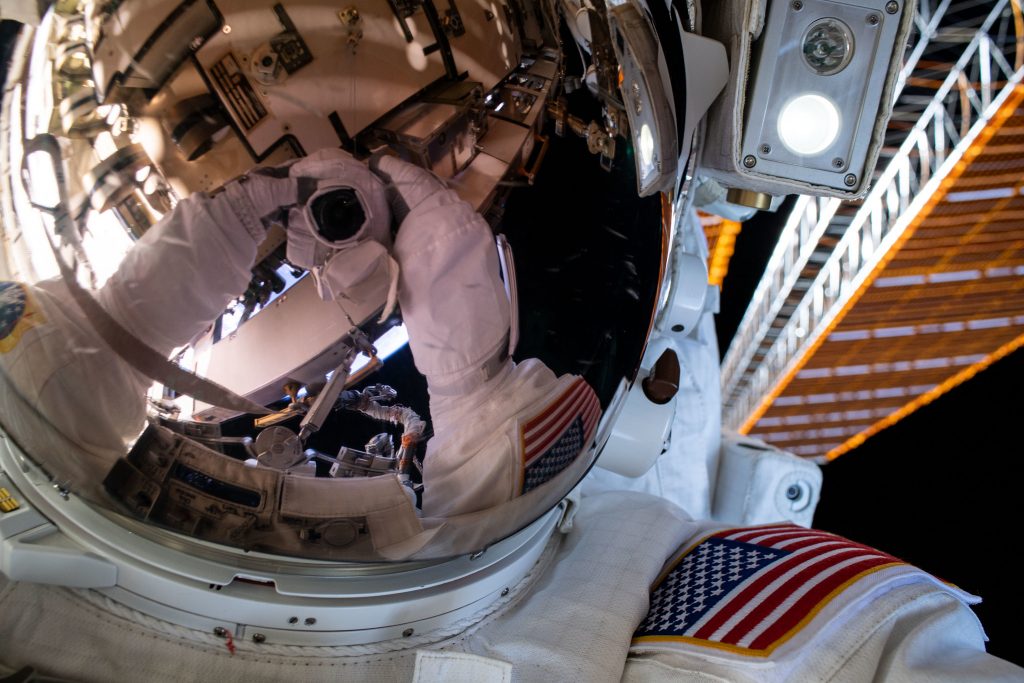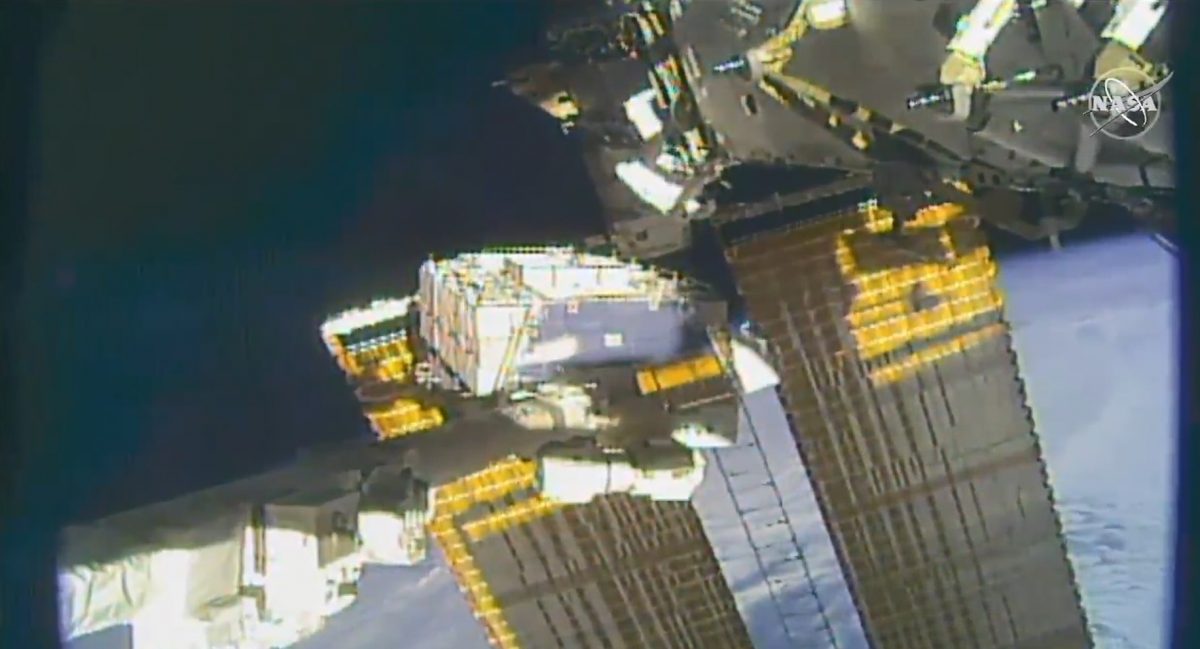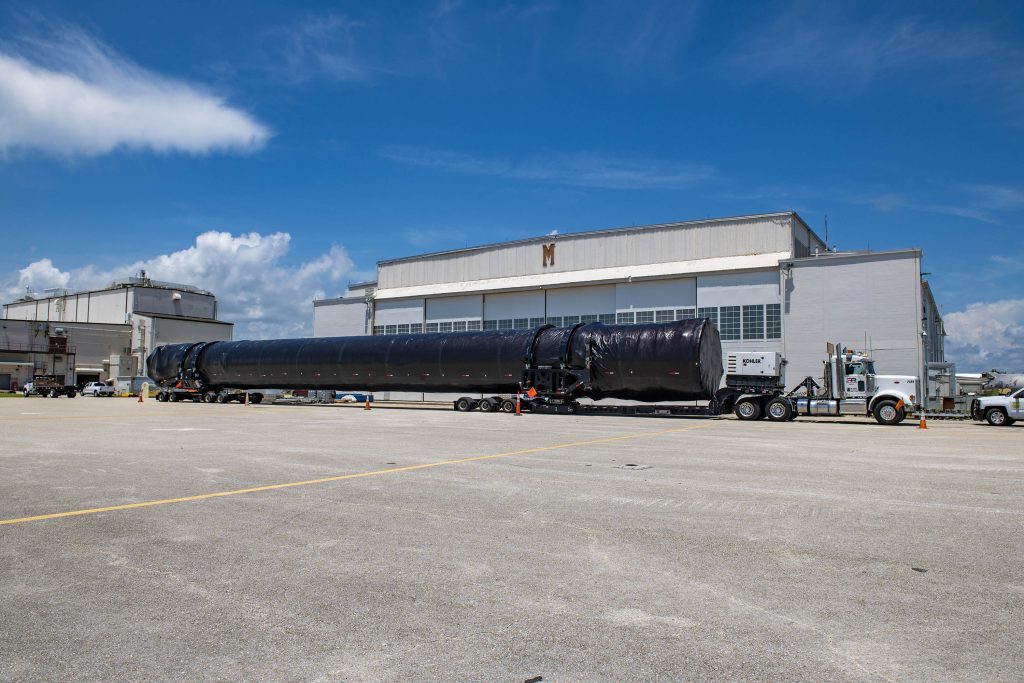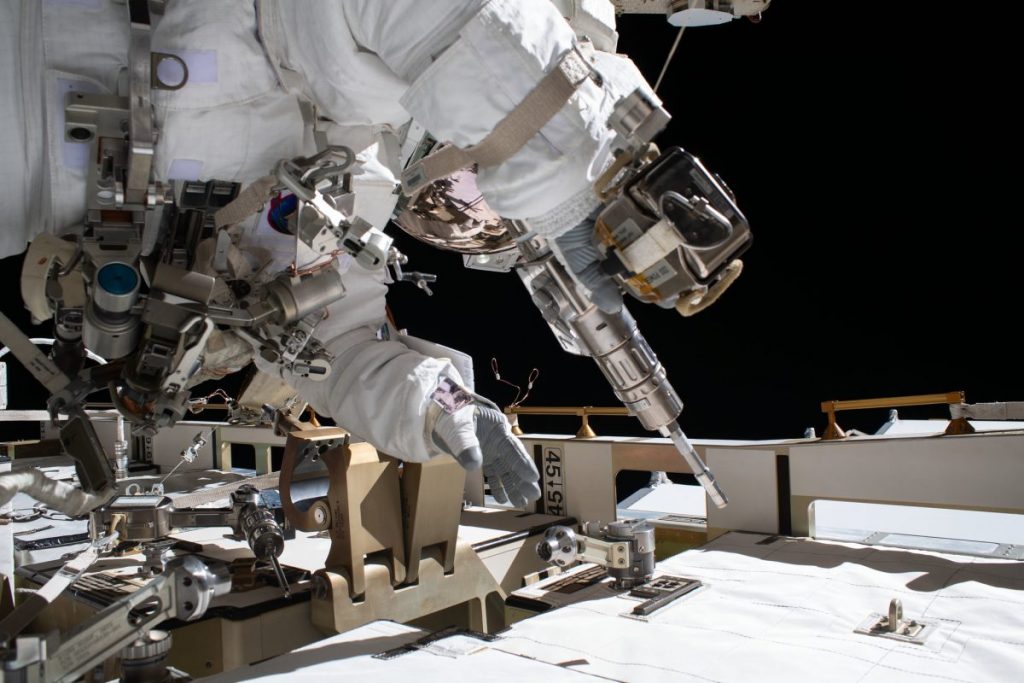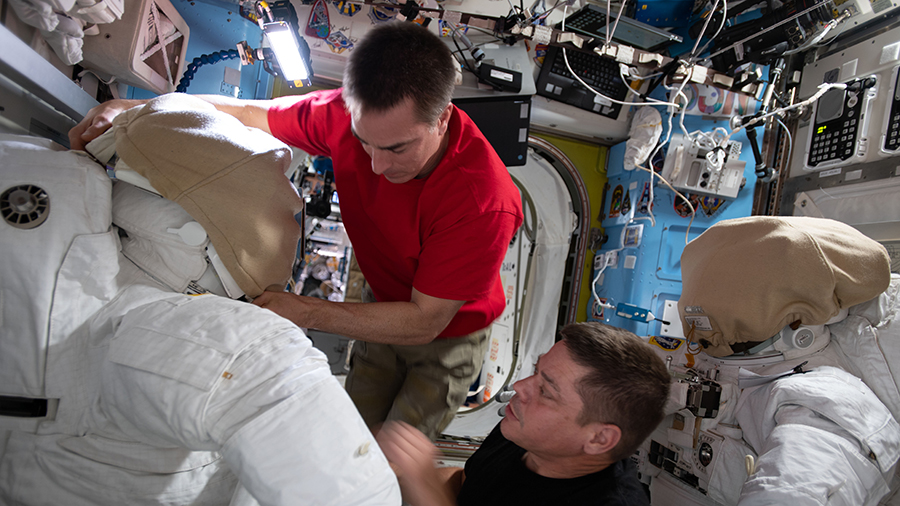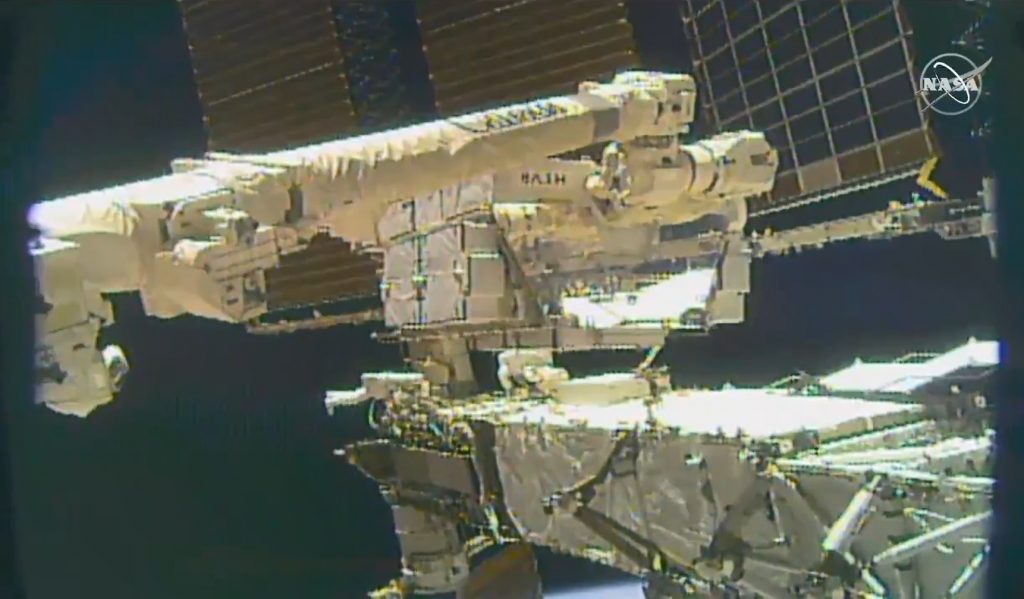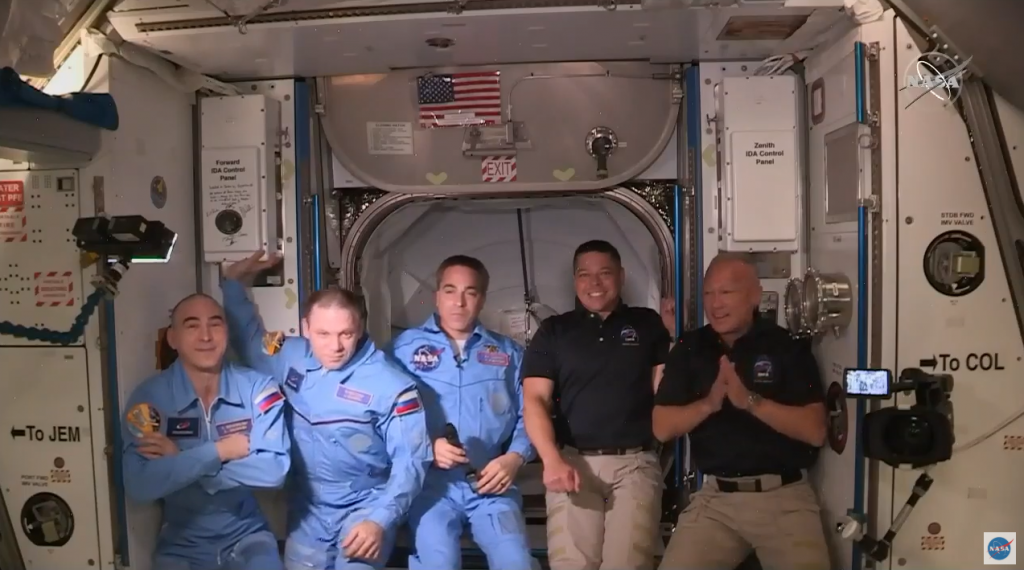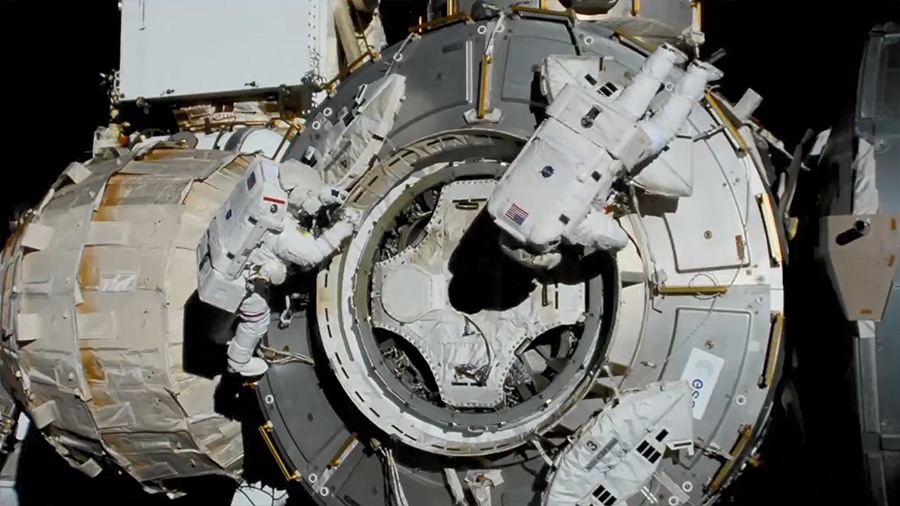
NASA astronauts Robert Behnken and Chris Cassidy concluded their spacewalk at 12:41 p.m. EDT, after six hours and 29 minutes. The two NASA astronauts completed a number of tasks designed to upgrade International Space Station systems.
They began by installing a protective storage unit that includes two Robotic External Leak Locator (RELL) units the Canadian Space Agency’s Dextre robot can use to detect leaks of ammonia, which is used to operate the station’s cooling system.
Behnken and Cassidy then removed two lifting fixtures at the base of station solar arrays on the near port truss, or backbone, of the station. The “H-fixtures” were used for ground processing of the solar arrays prior to their launch.
They then completed tasks to prepare the outside of the Tranquility module for the arrival later this year of the Nanoracks commercial airlock on a SpaceX cargo delivery mission. After its installation, the airlock will enable be used to deploy commercial and government-sponsored experiments into space. They also routed ethernet cables and removed a lens filter cover from an external camera.
For more information on today’s spacewalk and full coverage of all other station activities, visit the agency’s Space Station blog.

